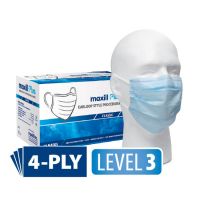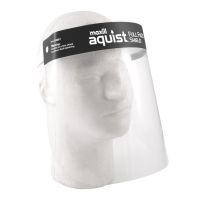Point of Care Risk Assessment to Triage Appropriate PPE

Infection prevention and control (IPAC) is a fundamental aspect of dental practice, ensuring the safety of both clients and dental professionals. A critical component of these standards is the Point of Care Risk Assessment (PCRA), which helps dental professionals determine the appropriate PPE for various procedures and client interactions.
A PCRA is conducted before any client interaction or procedure. It involves evaluating the potential risks of exposure to infectious pathogens and determining the necessary measures to mitigate these risks. This assessment considers the client’s health status, the type of dental procedure, and the likelihood of exposure to blood, bodily fluids, and other infectious materials. The following are elements to consider during a PCRA:
Client Health Status: Assessing the client’s medical history, including any known infections or immunocompromised conditions, is crucial. Clients with respiratory symptoms or other signs of infection may require additional precautions.
Procedure Type: Different dental procedures carry varying levels of risk. For example, aerosol-generating procedures (AGPs) such as ultrasonic scaling or high-speed drilling pose a higher risk of airborne transmission and require more robust PPE.
Exposure Likelihood: Evaluating the potential for exposure to blood, saliva, and other bodily fluids, helps in determining the necessary protective measures. Procedures involving sharp instruments or direct contact with mucous membranes require heightened precautions.
The appropriate selection of PPE based on PCRA ensures maximum protection for dental professionals and clients. The following outlines specific PPE requirements tailored to the assessed risk levels:
Routine Practice
For routine care and non-aerosol-generating procedures, routine practice includes:
Gloves: To protect against direct contact with blood and bodily fluids.
Surgical masks (level 3): To prevent exposure to respiratory droplets.
Protective eyewear or face shields: To protect your eyes from splashes and sprays.
Gowns: To protect skin and uniform from contamination.
Additional Precautions
For AGPs or when treating clients with known infections, additional precautions include:
N95 respirators or equivalent: To filter out airborne particles and provide a higher level of respiratory protection.
Full face shields: To provide comprehensive coverage against splashes and sprays.
Fluid-resistant gowns (level II): To provide additional protection against fluid penetration.
Effective implementation of PCRA in dental offices involves the following steps:
Training and Education
Dental professionals must receive regular training on conducting PCRA and the proper use of PPE. This ensures that all staff are knowledgeable about the latest IPAC standards and practices. The type of training required is assessed, planned, and executed by the IPAC Officer. Participation from all team members is mandatory. In the catchphrase ‘seeing is believing’ an effective approach to PPE training includes the use of fluorescent gel and black light technology to demonstrate when improper PPE doffing cross contaminates the dental clinician. Simulated training needs to occur yearly to have an impact on the retention of information.
It is highly recommended the simulated training includes various areas of the dental office where doffing of PPE occurs. Dental offices participate yearly in medical emergency training including simulations of different medical conditions, where rehearsing and practicing responses prepare the team in case of a real emergency. The same concept can be applied to PPE training where the more it is repeated the more the team will be educated and prepared to make a PCRA.
Standardized Protocols
Establishing standardized protocols for PCRA helps maintain consistency and reliability in risk assessments. These protocols are part of an IPAC manual and must be easily accessible to all staff members. PCRA policies and procedures development is the responsibility of the IPAC Officer with collaborative support from management. As a visual reminder for compliance, a PCRA infographic needs to be placed in areas of the office where PPE donning unfolds as well as an appendix in the IPAC manual.
Monitoring and Evaluation
Regular monitoring and evaluation of PPE use and compliance with PCRA protocols help in identifying areas for improvement. Feedback mechanisms should be in place to address any gaps in practice. The IPAC Officer reviews the effectiveness of the developed and implemented PPE training and adjusts any elements required for more supportive learning. PPE elements are part of the baseline and ongoing auditing by the IPAC Officer.
Resource Availability
Ensuring the availability of necessary PPE and other IPAC supplies is critical. Dental offices should maintain an adequate inventory of PPE to meet the demands of different risk scenarios. As there is no inventory shortage, as experienced during the COVID-19 pandemic, dental professionals are expected to resume doffing and donning new PPE for each client intervention. Extended wear of PPE is no longer acceptable.
In conclusion, the Point of Care Risk Assessment is a vital tool in the selection and triage of PPE in dental offices. Incorporating visual simulation training will strengthen the team’s participation. The PCRA infographic will ensure visual reminders for improved compliance. Through diligent adherence to these practices, the dental community can continue to provide safe and high-quality care to their clients.
Thanks for reading our latest blog! If you've got a topic that you'd like to see us tackle next, please submit your suggestion to our blog writing team of dental professionals at blogs@maxill.com.












